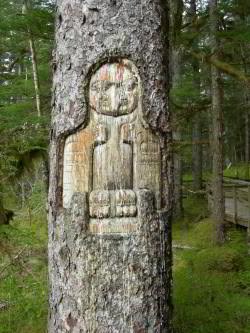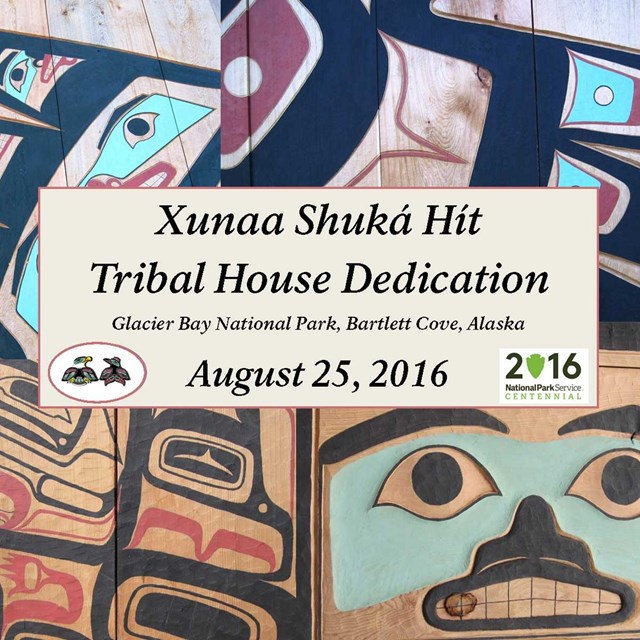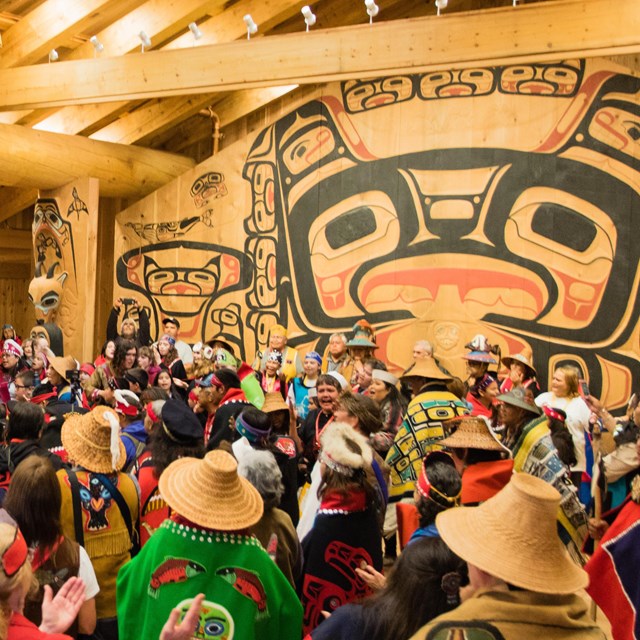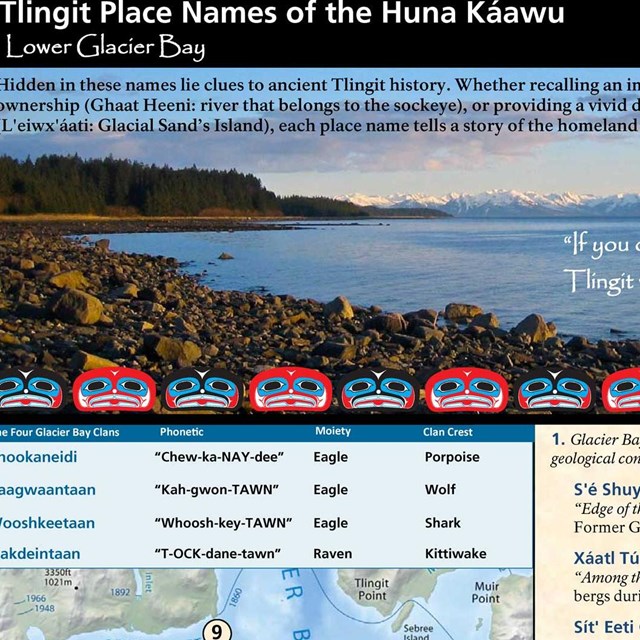
|
Discovering the EssenceMost visitors approach Glacier Bay with an eye to capturing something new - perhaps a first glimpse of an ice-blue glacier, a few days of solitude in wilderness waters, or peaceful moments walking through the towering forests of Bartlett Cove. Even those who return again and again have the opportunity to experience some new sight or sound, to reflect on some newly awoken feeling. But for the Huna Lingít, Glacier Bay is a place not just of new discoveries, but of reconnection with the lifeways, knowledge, and ancestors of the past. It is a land that sustained them with a rich abundance of fish, wildlife, and plants, but more importantly a place that continues to sustain them through stories, songs, dances, and ongoing traditional practices. Although most Huna Lingít today live across Icy Strait in the modern village of Hoonah, Glacier Bay remains their spiritual homeland. Their ancient stories and place names speak eloquently of the history of their beloved bay. Traditionally, four Huna Lingít clans occupied territories in and around Glacier Bay. When Glacier Bay became a National Monument in 1925, its borders encompassed much of the traditional Huna Lingít homeland. New federal laws severely curtailed Native activities within the monument boundaries. So began a painful period of strained relations between the Huna Lingít and the National Park Service. But time has brought much healing. In recent years, the National Park Service and Hoonah Indian Association, the tribal government, have worked cooperatively to reinvigorate those traditional harvest activities that are compatible with current regulations, develop educational programs for Huna youth, sponsor summer culture camps, and collect and preserve oral histories. Each year, the park sponsors a range of cultural trips which allow Hoonah youth, elders, and other tribal members the opportunity to reconnect with Glacier Bay and share their knowledge of, and experiences with, this place that figures so prominently in their spiritual lives. But perhaps the most significant cooperative venture now graces the shores of Bartlett Cove. Xúnaa Shuká Hít, roughly translated as "Huna Ancestor's House," is the first permanent clan house in Glacier Bay since Lingít villages were destroyed by an advancing glacier over 250 years ago. Dedicated on August 25, 2016, this long awaited dream serves as a gathering place where tribal members can reconnect with their treasured homeland through ceremonies, workshops, camps, tribal meetings and other events. It also provides thousands of park visitors with opportunities to learn about Huna Lingít history, culture, and life ways.

Although the Huna Lingít no longer live permanently in Glacier Bay, you will find tangible evidence of their presence in and around Bartlett Cove. The sea otter hunting canoe on display next to the Visitor Information Station was carved by a team of Native carvers in 1987. Look for two Lingít trail markers carved into living spruce trees near Glacier Bay Lodge; one on the trail leading down to the dock from the lodge and the other along the Forest Loop Trail. These carvings serve as reminders of ancient ties to the land. But a perceptive visitor might also sense the intangible aspects of the Lingít's enduring connection to homeland. As you explore Bartlett Cove, allow yourself to hear the beat of traditional drums and the voices of ancestors recounting ancient clan stories. Ultimately, we will each carry within us slightly different versions of the essence that is Glacier Bay. We each have the opportunity for new discoveries - or rediscoveries - of the wonders of this special place. |
Last updated: September 26, 2025




